I have often heard people talking about the different things that go into cricket pads, but have often been curious about how they are put together. So, to take my mind off results in Australia, I thought I'd dissect an old pad to see what's going on inside.
The pads: a very old pair of Slazenger V500 Test. These are probably early to mid 90's. I got a fair few runs in them, so they're pretty nasty and have been sat in a loft for 20 years, and was never going to use them again. Me and my mate spent ages doing car boot sales to save up enough to get the best things we could at the time. We spent a lot of time making our lists of each item to buy, so much in fact that I ended up getting my Romida catalogue laminted and taking it with me everywhere. I even remember getting a free Slazenger cap from a new bat design I sent to them as a kid, but that's another story.
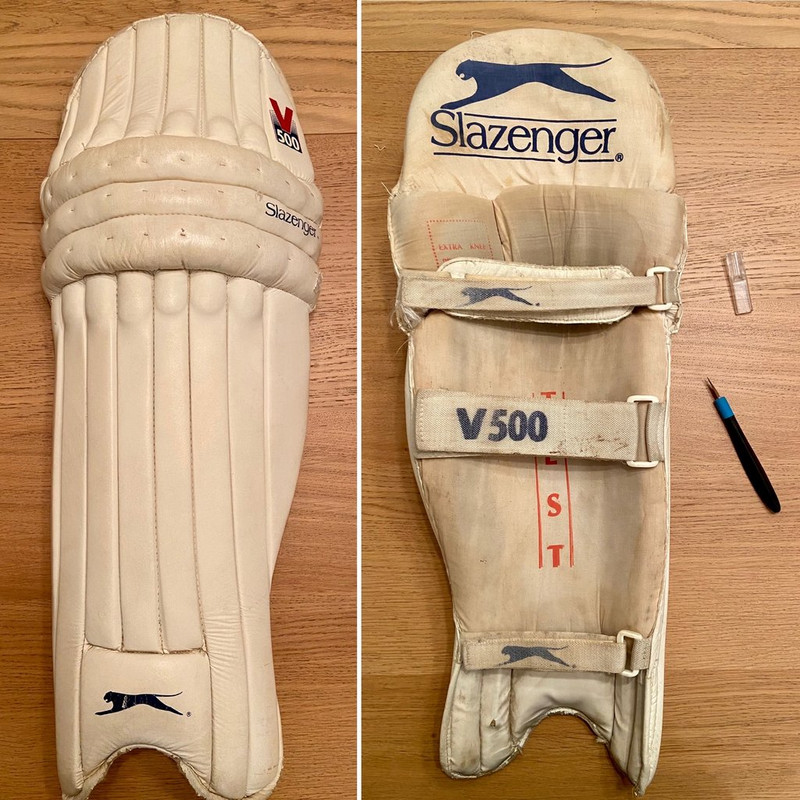
First incision. Pulled back the fabric and we've got common bath sponge material across the knees, and fairly low density foam in the shin and top areas. Nothing too suprising really.
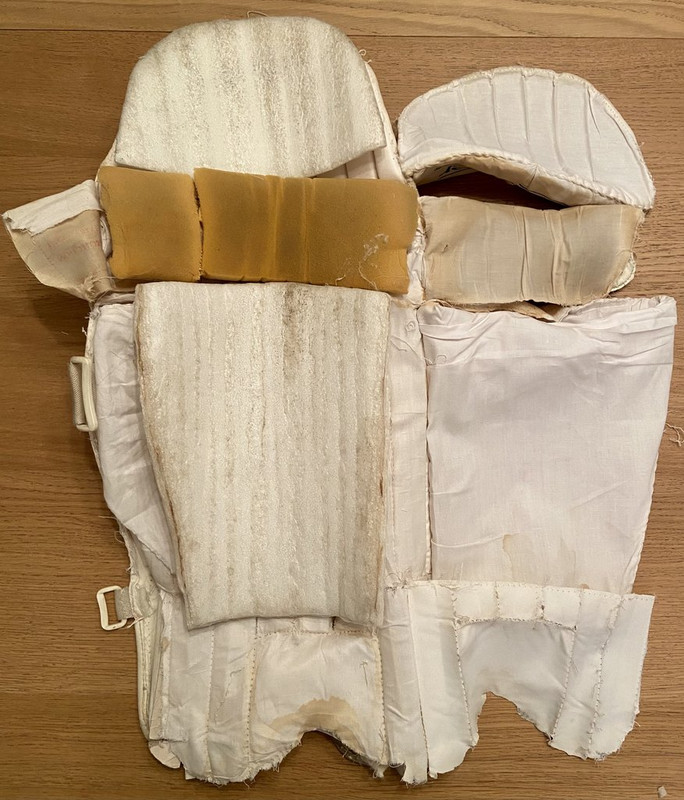
Second incision. Removed the sponge and foam to reveal a bit of high density foam on the inside of the knee (advertised as "Extra Knee Protection", suggesting that the low density stuff is not as good), more low density foam across the knee, and CARDBOARD (!) up and down the shin. Got to admit, that was a bit of a surprise to me.
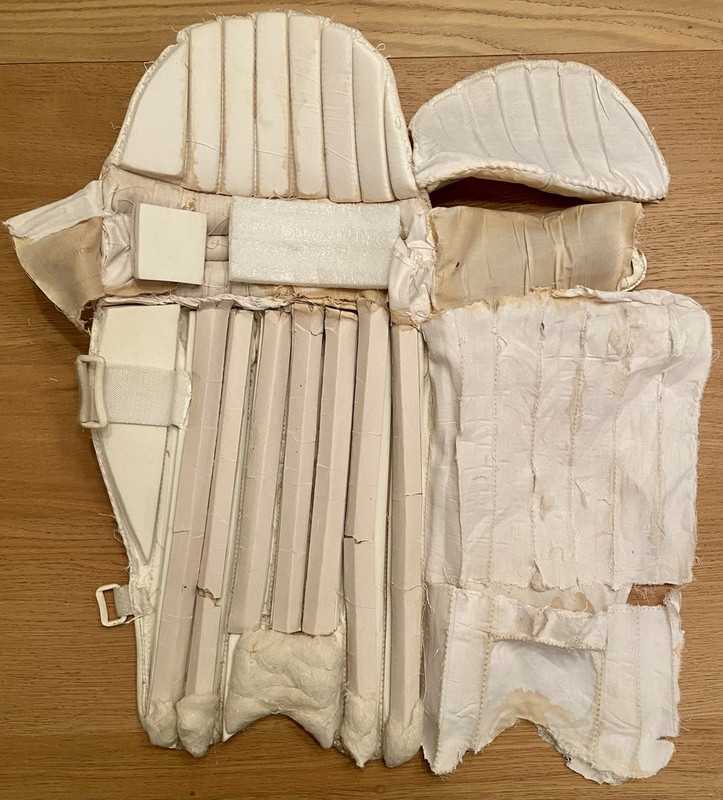
Third incision. Removed foam and cardboard to expose the cane in the shin area. I knew that they were there as you can see them in the lower parts near the foot, but they are exactly the same as traditional pads, but just turned around so that the flat surface faces forwards.
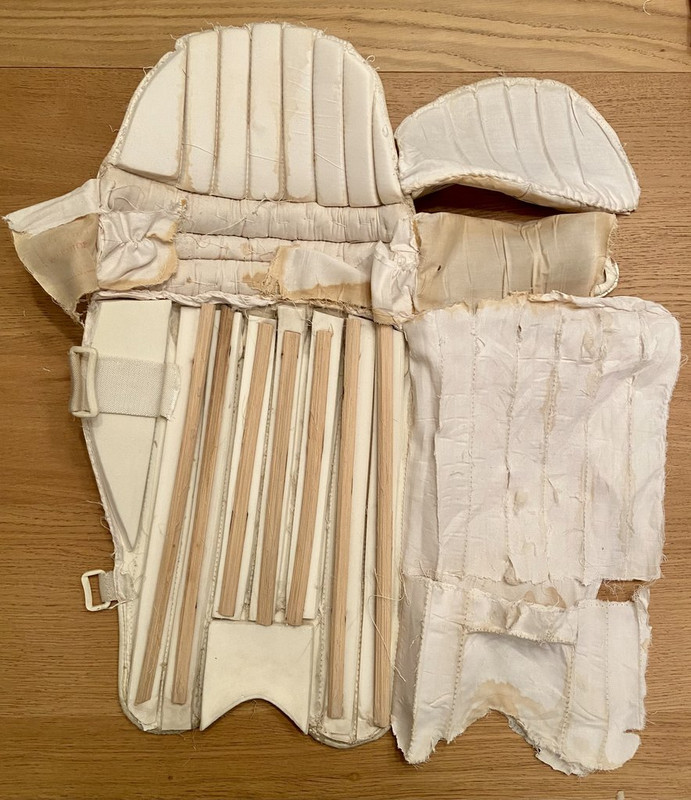
Fourth incision. More high density foam in front of the cane, which is the first surface of impact I guess.
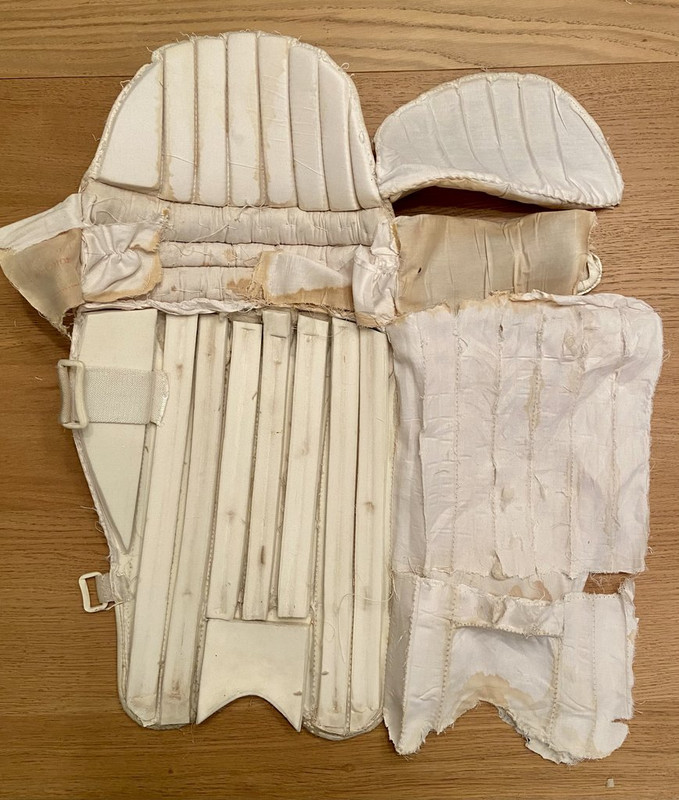
Fifth incision. Exposed the knee role, which was stuffed full of, I think, wool, although it could be very rough cotton. Got to admit, I didn't hang around too long with it, as it was very fibrous and shedding everywhere. Elsewhere we're back to the PU front surface and the stitch marks.
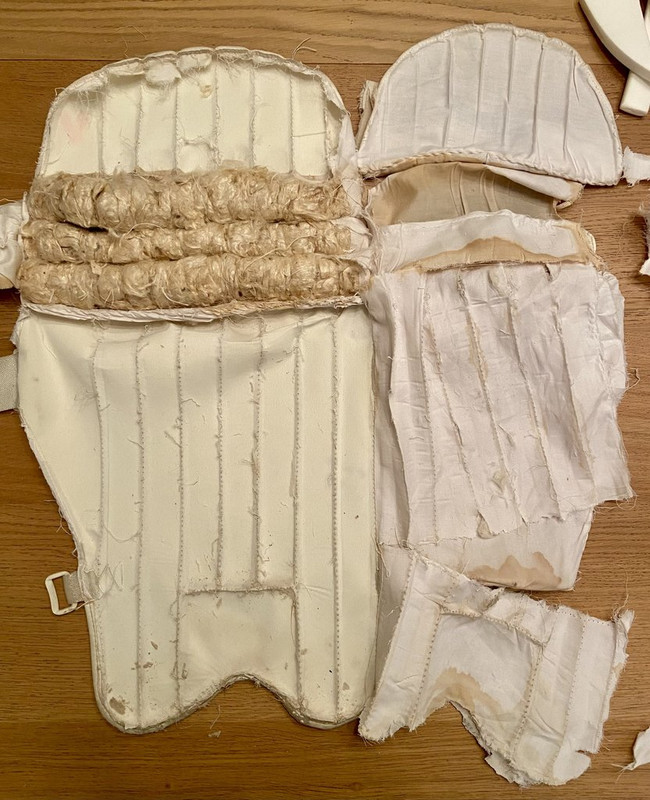
So there we are. Not many surprises, but thought it'd be worth weighing the individual components too, so people can see where the weight comes from.
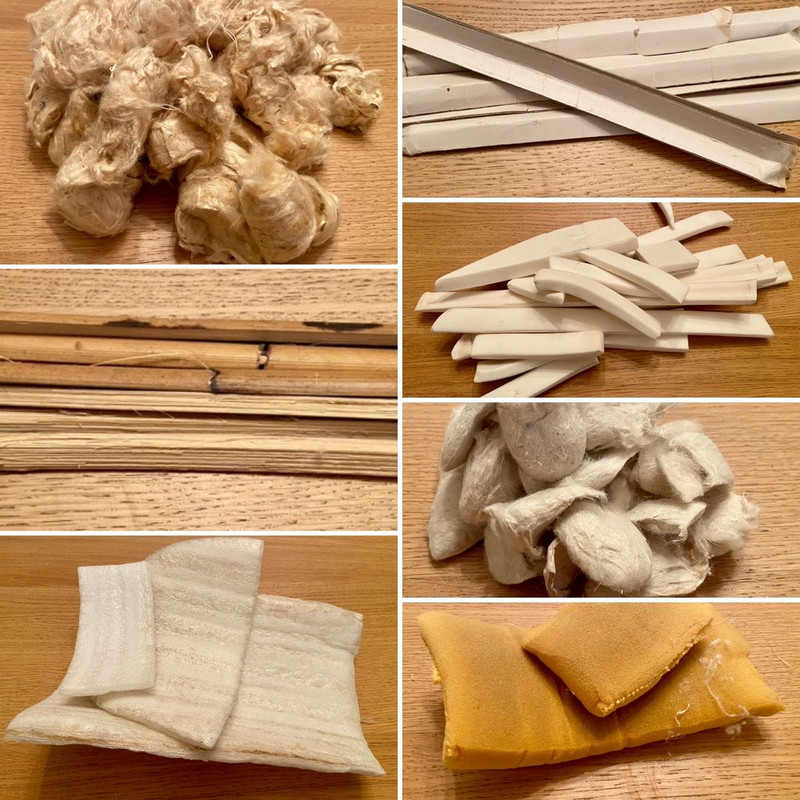
Closckwise from top left:
wool (?): 98 g
cardboard: 66 g
High density foam: 93 g
cotton extra bits: 32 g
sponge foam: 14 g
low density foam: 72 g
cane: 106 g
PU fabric and straps: 264 g
TOTAL = 745 g.
I've lost 20 g of extra fluff and bits somwhere, as the pad before was 766 g, but it's not far off being right.
What I'd be interested in finding out from those people that know more, is how pad design on the inside has changed in the last couple of decades. Has much changed at all? I know they're about 100-200 g heavier, but what is that weight coming from? Is the protection noticeably better? For what it's worth, I used to stick an unused Albion armguard up the inside of my leading leg pad after getting whacked there once and really feeling it.

 Author
Topic: Anatomy of a cricket pad (Read 3159 times)
Author
Topic: Anatomy of a cricket pad (Read 3159 times)
